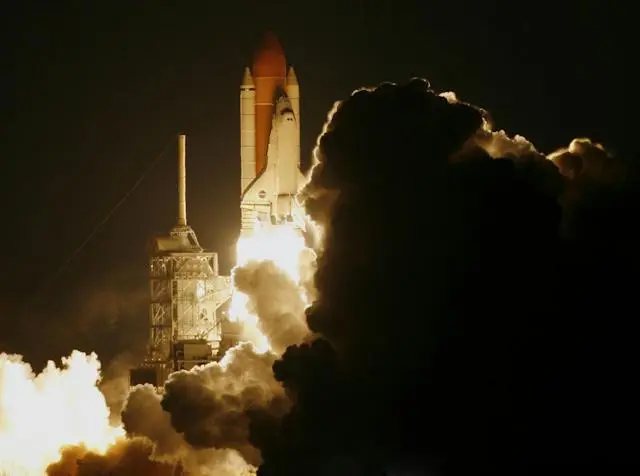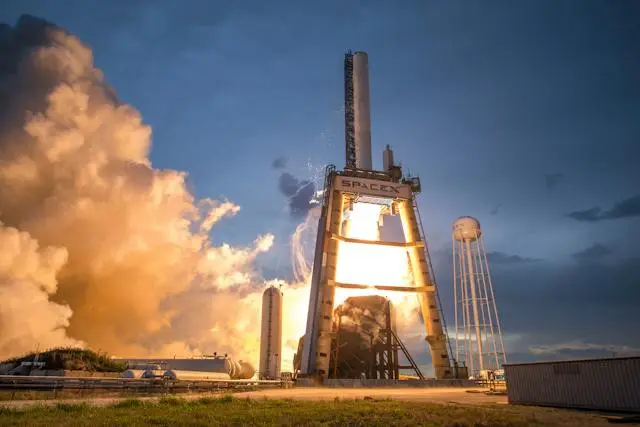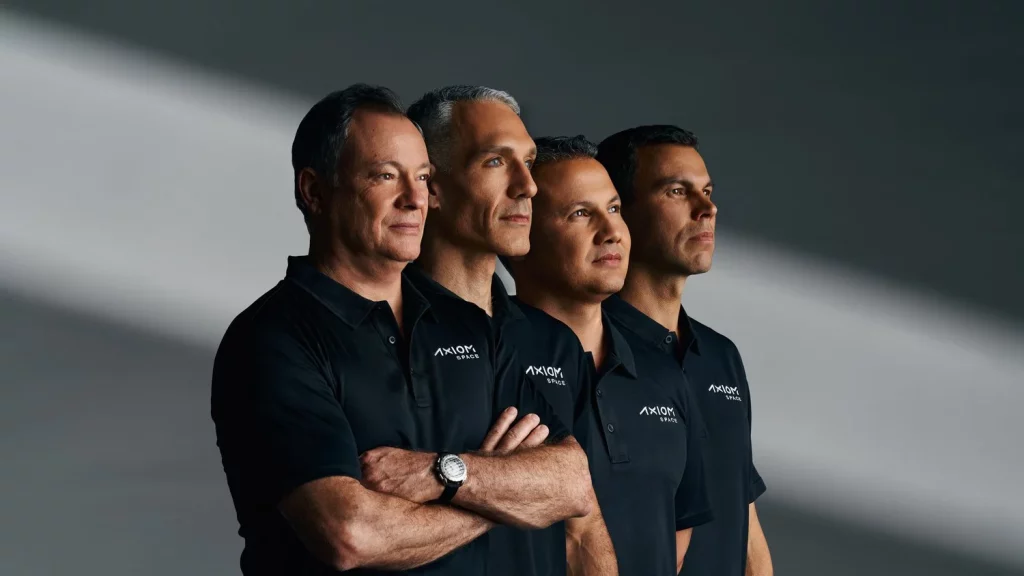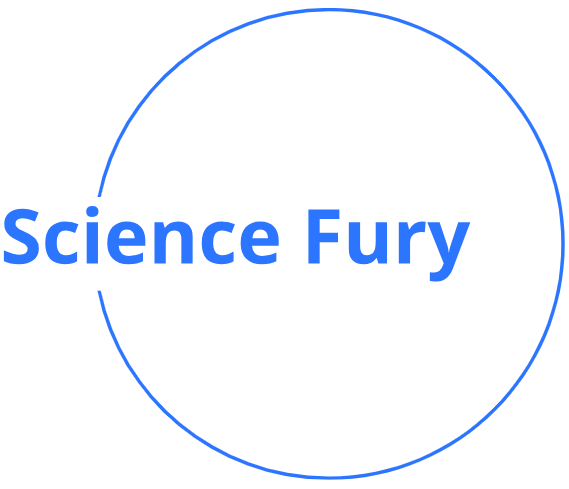Imagine looking out your window and seeing not the bustling city streets, but the swirling tapestry of our planet suspended in the velvety darkness of space. This is the breathtaking reality for the four visionary astronauts of Axiom Mission 3 (Ax-3). More than just scientific heroes, they are teachers, adventurers, and ambassadors, paving the way for a future where the vast expanse of space isn’t just for the chosen few, but for dreamers of all ages and backgrounds.
A New Era of Space Exploration Takes Flight

Axiom Mission 3: Bridging the Gap Between the Public and the Cosmos
On January 17th, 2024, history was made once again. Axiom Mission 3 (Ax-3), a beacon of private spaceflight, lifted off from Kennedy Space Center, carrying a multinational crew of four astronauts towards the International Space Station (ISS). This wasn’t just another launch; it was a giant leap toward democratizing access to space and opening up its wonders to a broader audience.
Unveiling the Crew: Visionaries Paving the Way
Leading the charge is Michael López-Alegría, a seasoned astronaut with five spaceflights under his belt. Joining him are three trailblazers:
- Walter Villadei, an Italian Air Force pilot and Axiom’s first European crew member.
- Alper Gezeravcı, the first astronaut from Turkey, symbolizing the expanding reach of space exploration.
- Marcus Wandt, the first ESA astronaut on a commercial mission, marking a crucial partnership between public and private space endeavors.
This diverse crew embodies the collaborative spirit of Ax-3, showcasing the global unity that propels us towards the stars.
A Mission More Than Just a Journey
Ax-3 isn’t merely a sightseeing trip. It’s a 14-day scientific expedition packed with over 30 research experiments designed to benefit humanity. These experiments delve into a variety of fields, including:
- Microgravity medicine: Studying the impact of microgravity on human cells and tissues to develop better treatments for diseases like cancer and osteoporosis.
- Material science: Testing new materials and processes in the unique space environment, potentially leading to innovations in construction, electronics, and even everyday products.
- Earth observation: Conducting experiments to better understand our planet’s climate, resources, and natural disasters, driving informed environmental policies.
By pushing the boundaries of scientific research in space, Ax-3 promises not only knowledge advancement but also practical applications that improve life on Earth.
Beyond the Lab: Educational Outreach and Inspiration
Ax-3’s impact extends beyond the confines of the ISS. The mission actively engages with the public through educational programs and live broadcasts, demystifying space for students and enthusiasts worldwide. Watching the crew conduct experiments, participate in spacewalks, and share their awe-inspiring views of Earth ignites a passion for STEM fields in the next generation of explorers.
A Glimpse into the Future of Space Exploration
Ax-3 serves as a stepping stone on the path towards a more accessible and inclusive future of space exploration. It demonstrates the viability of private companies like Axiom Space playing a crucial role in this endeavor, complementing the efforts of government agencies like NASA and ESA. This collaboration unlocks new possibilities for space tourism, research, and even future space habitats.
Axiom Mission 3: Beyond the Horizon with SpaceX and a Crew Like No Other
Forget a cape and tights, meet Axiom Mission 3 and SpaceX – the dynamic duo rocketing space exploration into its next era. While these two aren’t exactly partners in crime, their roles in Ax-3 paint a thrilling picture of collaboration and competition fueling the future of space travel.

SpaceX, the seasoned gunslinger of the launch world, strapped Ax-3 onto its trusty Falcon 9, propelling them towards the ISS. In this partnership, SpaceX isn’t just a muscle car for hire; their Crew Dragon is Ax-3’s trusty steed, entrusted to carry these dreamers among the stars.
But hold on, the plot thickens! Axiom, the ambitious newcomer, is no damsel in distress. They leased the Dragon, yes, but it’s the experiments, the crew selection, the vision itself that make them the brains behind the brawn. They’re charting their own course, one lunar module project and zero-gravity research session at a time.
This isn’t just a one-time adventure, though. Ax-3 and SpaceX are like frenemies at the space academy, pushing each other to new heights. Their healthy rivalry in space tourism sparks innovation, forcing both to constantly hone their skills and dream bigger. Think Tony Stark vs. Bruce Wayne, but with more star charts and less brooding.
But here’s the twist: Ax-3 and SpaceX are ultimately on the same team, Team Humanity. Their collaboration on Ax-3 is a beacon for a future where public and private entities join forces to unlock the secrets of the cosmos. Imagine a world where Axiom builds sleek space hotels while SpaceX ferries star-struck tourists, all fueled by the knowledge gleaned from Ax-3’s groundbreaking research.
So, while Axiom Mission 3 and SpaceX may not be holding hands and singing Kumbaya on the launchpad, their intertwined roles in this mission tell a story of competition, collaboration, and a shared vision for the future. And in this grand space opera, everyone wins – from the astronauts paving the way to the stargazers dreaming by their windows.
SpaceX vs. Axiom: Did Musk Just Get Competition for the Cosmos?
1. The Spacex & Axiom Synergy:
- SpaceX’s Falcon 9 and Crew Dragon are the backbone of Ax-3, showcasing a collaborative relationship between the two companies. This likely resonates with Musk’s vision of a multi-faceted space industry, where private enterprises play a key role.
- Axiom represents another significant player in the growing commercial space travel market, something Musk has actively championed.
2. A Nod to Competition:
- Elon Musk has previously expressed his desire for increased competition in the space sector, believing it’s the key to rapid advancements. Axiom’s emergence as a competitor in areas like space tourism and research potentially fuels this competitive spirit.
- However, competition doesn’t preclude respect. Ax-3’s success in sending a private crew to the ISS undoubtedly adds credibility to the entire commercial space sector, including SpaceX’s endeavors.
3. Focus on the Greater Goal:
- Ultimately, both Elon Musk and Axiom share a common goal: expanding humanity’s presence in space. Ax-3’s scientific research aligns with SpaceX’s Starlink and Starship projects, all contributing to a broader vision of exploration and resource utilization.
Axiom Mission 3 and the Rise of AI in Space Exploration
While Axiom Mission 3 doesn’t directly deploy AI as a crew member or spacewalk buddy, it weaves AI’s power throughout the mission in subtle yet impactful ways. Here are some key areas where AI plays a crucial role:
1. Optimizing the Journey:
- AI-powered flight planning: Complex software helps analyze weather patterns, optimize fuel usage, and choose the most efficient trajectories for both launch and docking with the ISS. This ensures a smooth and safe journey for the crew.
- Autonomous docking: Advanced algorithms guide the Crew Dragon capsule during its final approach and docking with the ISS, reducing human error and ensuring a precise connection.
2. Enhancing Science and Research:
- AI-powered data analysis: Onboard experiments in fields like microgravity biology and material science generate massive amounts of data. Artificial Intelligence tools handle this data deluge, identifying patterns, filtering anomalies, and accelerating scientific discovery.
- Robotic assistance: AI-powered robotic arms inside the ISS can assist astronauts with tasks like sample manipulation, equipment calibration, and even basic lab operations. This frees up valuable crew time for more complex research activities.
3. Connecting with Earth and Beyond:
- AI-powered communication: Advanced algorithms compress and optimize data transmission between the ISS and Earth, ensuring smooth communication with mission control and real-time information sharing with the public.
- Educational outreach: AI tools like chatbots and virtual reality simulations powered by Axiom Mission 3 data can bring the excitement of space exploration to classrooms and living rooms around the world, inspiring future generations.
While AI may not be visibly strolling through the ISS corridors with the crew, its invisible hand guides and enhances every aspect of Axiom Mission 3. From optimizing flight paths to analyzing research data, Artificial Intelligence provides critical support for the astronauts’ scientific endeavors and connects us back on Earth to the wonders of space exploration.
As private spaceflight becomes increasingly common, expect to see AI’s role in space missions expand. From piloting spacecraft to conducting complex scientific experiments, AI will be a crucial partner in humanity’s next giant leaps into the cosmos.

Frequently Asked Questions (FAQs):
- When did Axiom Mission 3 launch? January 17th, 2024.
- How long will Ax-3 last? Approximately 14 days.
- Who are the astronauts on board? Michael López-Alegría, Walter Villadei, Alper Gezeravcı, and Marcus Wandt.
- What are the main goals of Ax-3? Conducting scientific research, promoting STEM education, and contributing to the democratization of space exploration.
- What does this mission mean for the future of space travel? Ax-3 paves the way for increased private sector involvement in space exploration, potentially leading to more affordable and accessible spaceflight for everyone.
Conclusion: A Dawn of New Possibilities
Axiom Mission 3 is more than just a thrilling space adventure; it’s a pivotal moment in human history. It signifies a shift towards a future where space exploration is no longer an exclusive privilege, but a field open to collaboration, innovation, and boundless possibilities. As we watch the crew of Ax-3 conduct their research, perform spacewalks, and gaze back at our beautiful planet from afar, we’re reminded of the boundless potential that lies beyond the horizon.
This is just the beginning. With each successful mission like Ax-3, we inch closer to a future where the cosmos is no longer a distant dream, but a playground for all humanity.
